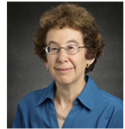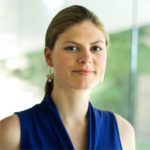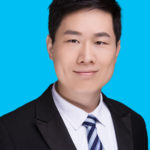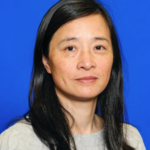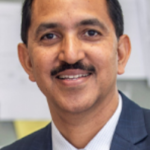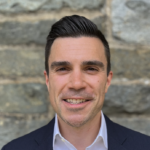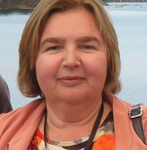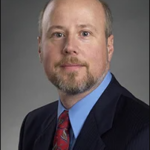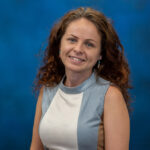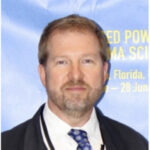Plasma Science and Applications (PSAC)
 The Plasma Science and Applications Committee of the NPSS deals with research and development of the plasma state of matter. Since plasmas are conductive, responding to electric and magnetic fields, they are usable in numerous applications where such control is needed or when special sources of energy or radiation are required.
The Plasma Science and Applications Committee of the NPSS deals with research and development of the plasma state of matter. Since plasmas are conductive, responding to electric and magnetic fields, they are usable in numerous applications where such control is needed or when special sources of energy or radiation are required.
Membership
PSAC EXCOM Officers
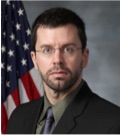
Brad Hoff, Chair |
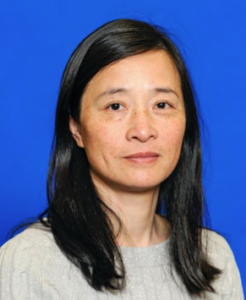
|
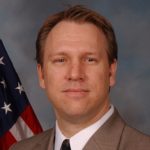
Jason Marshall, Past Chair |
TBD, Secretary |
PSAC Elected Members-at-Large
Terms Expiring in 2024
Terms Expiring in 2026
PSAC Ex Officio Voting Member
 Steven Gitomer, Editor-in-Chief of Transactions on Plasma Science
Steven Gitomer, Editor-in-Chief of Transactions on Plasma Science
PSAC Student Representatives
Jenny Smith, 2023-2024
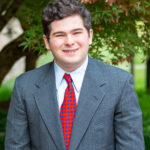 Jacob Kiviat, 2024-2025
Jacob Kiviat, 2024-2025
PSAC AdCom Representatives
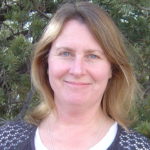 Christine Coverdale, AdCom 2024 Christine Coverdale, AdCom 2024 |
|
|
ExCom Standing Subcommittees
- The Awards Subcommittee identifies, encourages, and solicits PSAC member candidates for various IEEE awards: David Simon (chair).
- The Conference Budget Subcommittee advises International Conference on Plasma Science (ICOPS) chairs on budget preparation and reviews proposed budgets prior to approval by ExCom: Ian Ritterdorf (Chair).
- The Employment and Careers Subcommittee solicits resumes and job postings for inclusion in ICOPS career fair every year: Peggy Christenson (chair).
- The Membership Subcommittee recommends and implements ExCom-approved actions to increase PSAC membership:
- The Minicourse Subcommittee suggests topics for the annual Minicourse, held in conjunction with the ICOPS, and provides advice to help assure that the Minicourse is successful:
- The Nominations Subcommittee solicits nominees for the PSAC ExCom and for PSAC representatives to the NPSS AdCom: Fernanda Yamasaki (Chair), Debbie Levin.
- The Publicity Subcommittee develops and disseminates information about PSAC activities by submitting articles to the NPSS Newsletter: Nichelle Bennett (Chair).
- The Site Selection Subcommittee identifies potential ICOPS chairs and conference sites several years in advance, works with the proposed chairs to develop preliminary proposals, supports chairs with guidance, and presents recommendations to ExCom: Jane Lehr (Chair), Rajdeep Rawat.
- The Student Travel Grants Subcommittee solicits candidates for and selects student awardees to receives grants to cover partial costs of attendance at the PSAC ICOPS
Technical Committee Information
Constitution and Bylaws
Excom Meeting Minutes
Meetings
Meeting Information
- IEEE International Conference on Plasma Science (ICOPS2024)
- IEEE International Conference on Plasma Science (ICOPS2023)
- IEEE Sponsored Conferences
- American Physical Society Division of Plasma Physics
- American Physical Society Sponsored Conferences
- American Vacuum Society Sponsored Conferences
- Materials Research Society Sponsored Conferences
Plasma Science and Applications (PSAC) Award
Description
To recognize outstanding contributions to the field of Plasma Science.
Prize
A plaque, $3,000 cash award, and an invitation to present a talk at the International Conference on Plasma Science in the year of the award and to have the text of the talk published as an invited paper in the IEEE Transactions on Plasma Science.
Selection Criteria
Primary consideration will be given to the impact of the research or new applications. Other factors can include research contributions over a career, the influence on plasma science through teaching, and professional service to the NPSS Plasma Science and Applications Committee and the plasma science community. The nominee is not required to be a member of the NPSS or IEEE but, where candidates have otherwise equal qualifications, preference shall be given to the candidate who is a member of the IEEE. Open to all, excluding current members of the NPSS Plasma Science and Applications Executive Committee.
Forms and Instructions
Nomination Deadline as Shown on Form (September-October of each year)
PSAC-Award-Form-2023(docx)
PSAC-Award-Form-2023 (pdf)
Nominations should be sent to: Matthew Franzi, Chair, PSAC Awards Committee
Past Recipients
2023: Yakov Krasik, Technion-Israel Institute of Technology
For his significant contribution to the understanding of the physics of high-current ion diodes, plasma opening switches, plasma cathodes, nanosecond timescale discharges, warm dense plasma, converging strong shock waves and high-power microwaves generation and interaction with plasma.
2022: Professor Gary Eden, University of Illinois, Urbana
For contributions to plasma diagnostics through laser spectroscopy and microwave interferometry, chemical kinetics of low-temperature, high-pressure plasmas, probing of plasmas via transmission electron microscopy, and the introduction and development of microcavity plasmas for high power UV/VUV lamps, photolithography, water disinfection, atomic clocks, and the plasma/semiconductor photodetector and transistor.
2021: Farhat Beg, University of California San Diego, USA
For outstanding contributions on both laser- and Z-pinch-driven plasma physics including energetic particle production, ultra-high magnetic field generation, and the formation of well-diagnosed high energy density plasmas.
2020: Monica Blank, Communications and Power Industries, LLC, USA
For outstanding contributions to the development of high-power, high-frequency gyrotron amplifier and oscillator sources for spectroscopy, radar, fusion, and industrial applications.
2019: John Verboncoeur, Michigan State University
For pioneering contributions to computational plasma science research and outstanding leadership in computational engineering education and in the plasma science professional community.
2018: John H. Booske, University of Wisconsin-Madison
For seminal contributions to vacuum electronics and microelectronics, the education of generations of talented students, and leadership in advanced cathodes, sheet electron beams, microwave and millimeter-wave sources, and electromagnetic interaction with materials.
2017: Alan D. R. Phelps, University of Strathclyde, Glasgow, United Kingdom
For groundbreaking and influential contributions to the field of plasma science, including: diagnostics, waves, plasma-surface interactions, beam instabilities, ionospheric plasmas, magnetospheric science and novel microwave radiation sources.
2016: Christine A. Coverdale, Sandia National Laboratories
For contributions to innovation in K-shell x-ray sources with multi-keV photon energies plus deuterium gas puff neutron sources, and service to the IEEE Nuclear and Plasma Sciences Society.
2015: Alexander L. (Sasha) Velikovich, Naval Research Laboratory
For advancing the theory of plasma shocks, hydrodynamics and magneto-hydrodynamics, thus enabling many-fold increases in both Z-pinch and laser-plasma experimental performance in radiation and fusion applications.
2014: Michael Desjarlais, Sandia National Laboratories
For pioneering contributions to the understanding of electrical and thermal transport properties, and equations of state for materials at extreme conditions through the use of first-principles density functional calculations, and generating numerous state-of-the-art wide-range conductivity models for use in a broad spectrum of simulation codes.
2013: Richard J. Temkin, Massachusetts Institute of Technology
For fundamental contributions to the field of high power gyrotrons and their application.
2012: Andrew Ng, University of British Columbia
For pioneering contributions to Warm Dense Matter Science through research on laser-driven shock compression and isochoric laser heating of solids, and for pivotal leadership in the advancement of Warm Dense Matter as a multidisciplinary scientific frontier.
2011: Thomas Katsouleas, Duke University
For fundamental contributions to the field of plasma-based accelerators.
2010: Manfred Thumm, Karlsruhe Institute of Technology
For outstanding contributions to the development of high power microwave sources (in particular gyrotrons) for application in magnetically confined fusion plasma devices as well as for stimulating and establishing extensive international co-operations .
2009: Robert H. Barker, Air Force Office of Scientific Research
For more than two decades of visionary leadership in the fields of non-equilibrium air plasmas, compact pulsed power, and high power microwave/millimeter-wave electronics.
2008: Phillip Sprangle, Naval Research Laboratory
For pioneering research in plasma science, advanced accelerators and advanced radiation sources.
2007: Yitzhak Maron, Weizmann Institute of Science
For pioneering the application of spectroscopic techniques to the detailed space and time characterization of electric and magnetic fields, charged-particle beams, and plasmas under extreme conditions of high-current, high-voltage, high-fields, and short-duration.
2006: Christopher Deeney, Sandia National Laboratories
For contributions to the advancement of Z-pinch physics understanding and applications.
2005: Neville Luhmann, Jr., University of California, Davis
For pioneering contributions to basic plasma science, and for the development of coherent microwave sources, including harmonic gyrotrons and gyro-TWTs, and of millimeter-wave imaging technologies, for plasma diagnostics and other applications.
2004: David A. Hammer, Cornell University
For fundamental contributions to the understanding of intense relativistic electron beam propagation, intense ion beam generation and propagation, innovative plasma diagnostic development for intense beam devices, x-ray source development using novel plasma pinches, and for his commitment to the mentoring of graduate students in the field of plasma science.
2003: Thomas A. Antonsen, Jr., University of Maryland
For his creative and seminal analyses of important problems in relativistic electronics, in the interaction of intense light pulses with plasmas, and in the heating and confinement of fusion plasmas.
2002: lgor Alexeff, University of Tennessee
For outstanding contributions to plasma science, including pioneering work on ion acoustic waves and on plasma sheath expansion, substantial impact on the development of high power microwave sources, dedicated mentorship and education of generations of students, and extraordinary professional service, including co-founding of the IEEE Nuclear and Plasma Sciences Society in 1972.
2001: Kwo Ray Chu, National Tsing Hua University of Taiwan
For seminal plasma physics investigations yielding fundamental insight into coherent radiation processes, thereby significantly advancing the state of gyro-oscillator and amplifier technology.
2000: Mark Kushner, University of Illinois
For pioneering contributions to industrial applied plasma physics through personal research, consultation, the education of students, and the establishment of a world-class industrial plasma research facility at the University of Illinois.
1999: Y.Y. Lau, University of Michigan
For pioneering contributions to the science of electron-beams and coherent radiation sources, including electron-beam instabilities and crossed-field flow, multipactor, gyro-amplifiers, and ion-noise in traveling wave tubes.
1998: Akira Hirose, University of Saskatchewan
For outstanding contributions to theoretical/experimental work on basic and fusion-related plasma science including studies of waves, turbulent heating, quasi-steady operation, and anomalous transport in tokamaks.
1997: Ronald M. Gilgenbach, University of Michigan
For his many contributions to plasma science, particularly those in the area of cyclotron resonance heating of plasmas, long-pulse high-power diodes, electron beam transport and stability, and innovative diagnostics of laser-ablated plasma plumes.
1996: Wallace M. Manheimer, Naval Research Laboratory
For pioneering contributions to relativistic microwave electronics and to basic plasma theory. In particular, for developing new concepts in coherent radiation generation, including the quasi-optical gyrotron, and of new techniques for analyzing gyrotrons, gyro-klystrons, and free electron lasers.
1995: Michael A. Lieberman. University of California, Berkeley
For contributions to the pioneering development of the fields of fusion plasmas, plasma processing, and nonlinear dynamics, through both research and teaching.
1994: Francis F. Chen, University of California, Los Angeles
For outstanding contributions to plasma science in the areas of magnetic fusion, inertial confinement fusion, plasma diagnostics, laser-plasma interactions, plasma processing, and basic plasma phenomena.
1993: Noah Hershkowitz, University of Wisconsin
For contributions to plasma science through numerous experimental investigations of a variety of basic plasma phenomena, including solitons, plasma sheaths, ion-acoustic waves, electrostatic double layers, and magnetic cusps. His pioneering research efforts have dramatically enhanced our understanding of the confinement, heating, and stabilization of tandem mirror plasmas, as well as fueling and impurity generation processes in small and medium-sized tokamaks.
1992: Paul F. Ottinger, Naval Research Laboratory
For outstanding contributions in two areas of plasma science: intense light-ion-beam transport, stability and focusing for inertial confinement fusion, and the theory of the plasma opening switch for application to pulsed-power generators.
1991: Victor L. Granatstein, University of Maryland
For outstanding contributions to three areas of research: microwave generation with intense relativistic electron beams, RF sources for electron resonance heating of fusion plasmas, and microwave device physics and technology.
1990: Leon Shohet, University of Wisconsin
For outstanding contributions to research and education in the field of plasma science and engineering including significant contributions to stellarator research.
1989: George Bekefi, Massachusetts Institute of Technology
For outstanding contributions to the understanding of electromagnetic radiation processes in electron beam devices and plasma.
1988: Charles K. Birdsall, University of California, Berkeley
For the development and application of many-particle computer simulations to instabilities, heating and transport of high-temperature plasmas.
Igor Alexeff Outstanding Student in Plasma Science Award (established in 2008)
Description
To recognize outstanding contributions to the field of plasma science and technology. This award will be presented annually at the IEEE International Conference on Plasma Science.
Prize
$2000 and Plaque Funded by the IEEE Nuclear and Plasma Sciences Society’s Plasma Science and Applications Committee
Selection Criteria
Any full time undergraduate or graduate university student in plasma science. The nominee must be a student when nominated. Nominees will be judged according to their contributions to plasma science. The judgment will be based on quality of research contributions, quality of educational accomplishments, and quality and significance of publications and patents.
Forms and Instructions
Nomination Deadline as Shown on Form (September-October of each year)
Alexeff-Award-Form-2023 (pdf)
Nominations should be sent to: Matthew Franzi, PSAC Awards Committee
Past Recipients
2023: Dion J. Li, University of Michigan
For extension of the Ramo-Shockley theorem to include relativistic and electromagnetic effects; for discovery of an electromagnetic shock totally absent in the Ramo-Shockley Theorem and its implications on multipactor discharge and on high power microwave sources.
2022: Khandakar Islam, University of New Mexico, Albuquerque, New Mexico
For coming up with a novel, elegant approach to generating multiple electron beams with comparable currents and ~10% energy difference from a single cathode at a single potential to drive a multistream traveling wave tube (TWT).
2021: Mei Er Pam, Singapore University of Technology and Design
For the comprehensive studies (related to plasma processing) in using chemical vapor deposition (CVD) for the material growth of various two-dimensional (2D) transition metal dichalcogenides (TMDCs) for future applications in nanoelectronics and energy storage.
2020: Alexander Rososhek, Technion-Israel Institute of Technology
For comprehensive experimental and numerical research on sub-microsecond timescale underwater electrical explosions of single wires and wire arrays and the study of the generated strong shock waves.
2019: Revathi Jambunathan, University of Illinois, Urbana-Champaign
For the development of a scalable, three-dimensional, octree-based solver used to perform large-scale simulations of thruster plume interactions with spacecraft and to predict the ion energy distribution used to estimate surface sputtering rates.
2018: Amanda M. Loveless, Purdue University
For deriving analytic scaling laws that demonstrate the deviation of gas breakdown from the traditional Paschen’s Law for microscale gaps and for developing universal equations that capture the transition from field emission to Townsend breakdown for micrometer gaps.
2017: David Yager-Elorriaga, University of Michigan, Ann Arbor, MI, USA
2016: Andreas Schlaich, Karlsruhe Institute of Technology
For fundamental contributions to techniques for the investigation of gyrotron radio-frequency output spectra, both concerning novel measurement systems and the development of advanced data analysis tools, as well as investigations on various types of parasitic oscillations.
2015: Guy Rosenzweig, Weizmann Institute
For developing and implementing, for the first time, a spectroscopic method for the measurement of the time-resolved magnetic field distribution, in both r and z, near the pinch axis, and throughout stagnation in a Z-pinch experiment.
2014: Shurik Yatom, Technion
For non-disturbing measurements of the parameters of runaway electrons, density of transient plasma and electric fields during nanosecond time scale discharge in pressurized gases.
2013: Paul Schmit, Princeton University
For the discovery of novel wave effects in compressing plasma, including: the switch-like collisionless damping mechanism capable of prescribing bursts of heat, current, magnetic field, or voltage; the autoresonant beam acceleration induced by plasma compression; and the curious effects of nonlinear plasma waves on plasma compressibility.
2012: Boaz Rubinstein, Weizmann Institute
For experimental and theoretical plasma spectroscopy advances leading to new insights into magnetic field penetration in nearly-collisionless plasmas.
2011: Chao Chang, Tsinghua University, Beijing
For theoretical and experimental contributions to the understanding and suppression of high voltage microwave-driven breakdown phenomena.
2009: Gregory Fridman, Drexel University
For contributions to the field of Plasma Medicine.
IEEE Nuclear and Plasma Sciences Society Paul Phelps Continuing Education Grant
IEEE Nuclear and Plasma Sciences Society Paul Phelps Continuing Education Grant
Resources
Publications
- Transactions on Plasma Science at Manuscript Central.
- Transactions on Plasma Science at IEEE Xplore.
- Transactions on Plasma Science on NPSS website.

